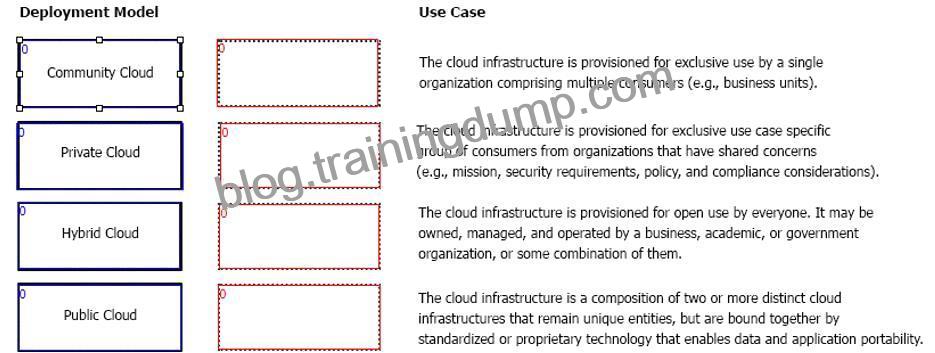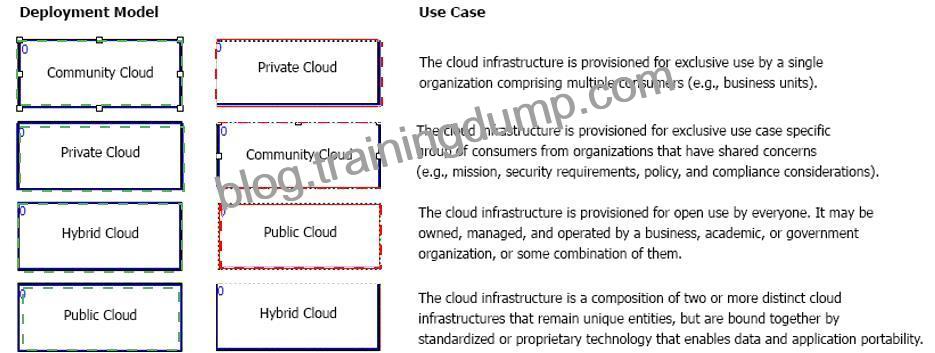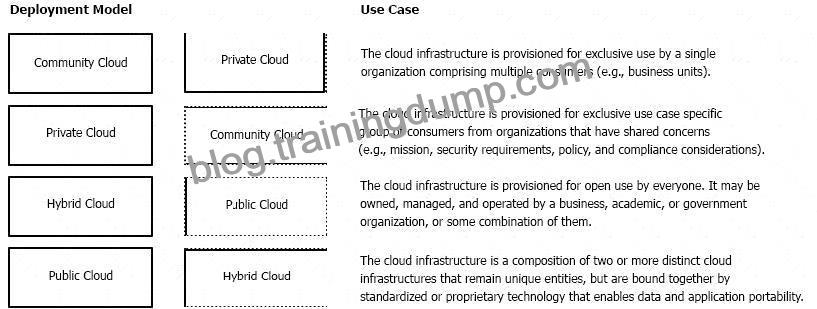NEW QUESTION 16
Match the use case with the appropriate cloud deployment model.


Explanation:

According to the HPE Edge-to-Cloud Adoption Framework, page 5, the following matches are correct:
The cloud infrastructure is provisioned for exclusive use by a single organization comprising multiple consumers (e.g., business units). = Private Cloud The cloud infrastructure is provisioned for exclusive use case specific group of consumers from organizations that have shared concerns (e.g., mission, security requirements, policy, and compliance considerations). = Community Cloud The cloud infrastructure is provisioned for open use by everyone. It may be owned, managed, and operated by a business, academic, or government organization, or some combination of them. = Public Cloud The cloud infrastructure is a composition of two or more distinct cloud infrastructures that remain unique entities, but are bound together by standardized or proprietary technology that enables data and application portability. = Hybrid Cloud Private Cloud: A private cloud is a cloud deployment model where the cloud infrastructure is provisioned for exclusive use by a single organization comprising multiple consumers (e.g., business units). It may be owned, managed, and operated by the organization, a third party, or some combination of them, and it may exist on or off premises. A private cloud offers the organization more control, security, and customization over their cloud resources, but it also requires more investment, maintenance, and expertise1.
Community Cloud: A community cloud is a cloud deployment model where the cloud infrastructure is provisioned for exclusive use by a specific group of consumers from organizations that have shared concerns (e.g., mission, security requirements, policy, and compliance considerations). It may be owned, managed, and operated by one or more of the organizations, a third party, or some combination of them, and it may exist on or off premises. A community cloud offers the group of consumers more collaboration, cost-sharing, and alignment over their cloud resources, but it also requires more coordination, governance, and trust1.
Public Cloud: A public cloud is a cloud deployment model where the cloud infrastructure is provisioned for open use by everyone. It may be owned, managed, and operated by a business, academic, or government organization, or some combination of them, and it exists on the premises of the cloud provider. A public cloud offers the consumers more scalability, flexibility, and affordability over their cloud resources, but it also requires more dependency, compliance, and security1.
Hybrid Cloud: A hybrid cloud is a cloud deployment model where the cloud infrastructure is a composition of two or more distinct cloud infrastructures (private, community, or public) that remain unique entities, but are bound together by standardized or proprietary technology that enables data and application portability (e.g., cloud bursting for load balancing between clouds). A hybrid cloud offers the consumers more choice, agility, and innovation over their cloud resources, but it also requires more integration, management, and complexity1.

Leave a Reply